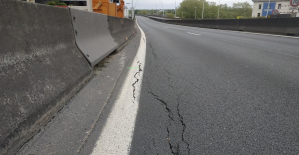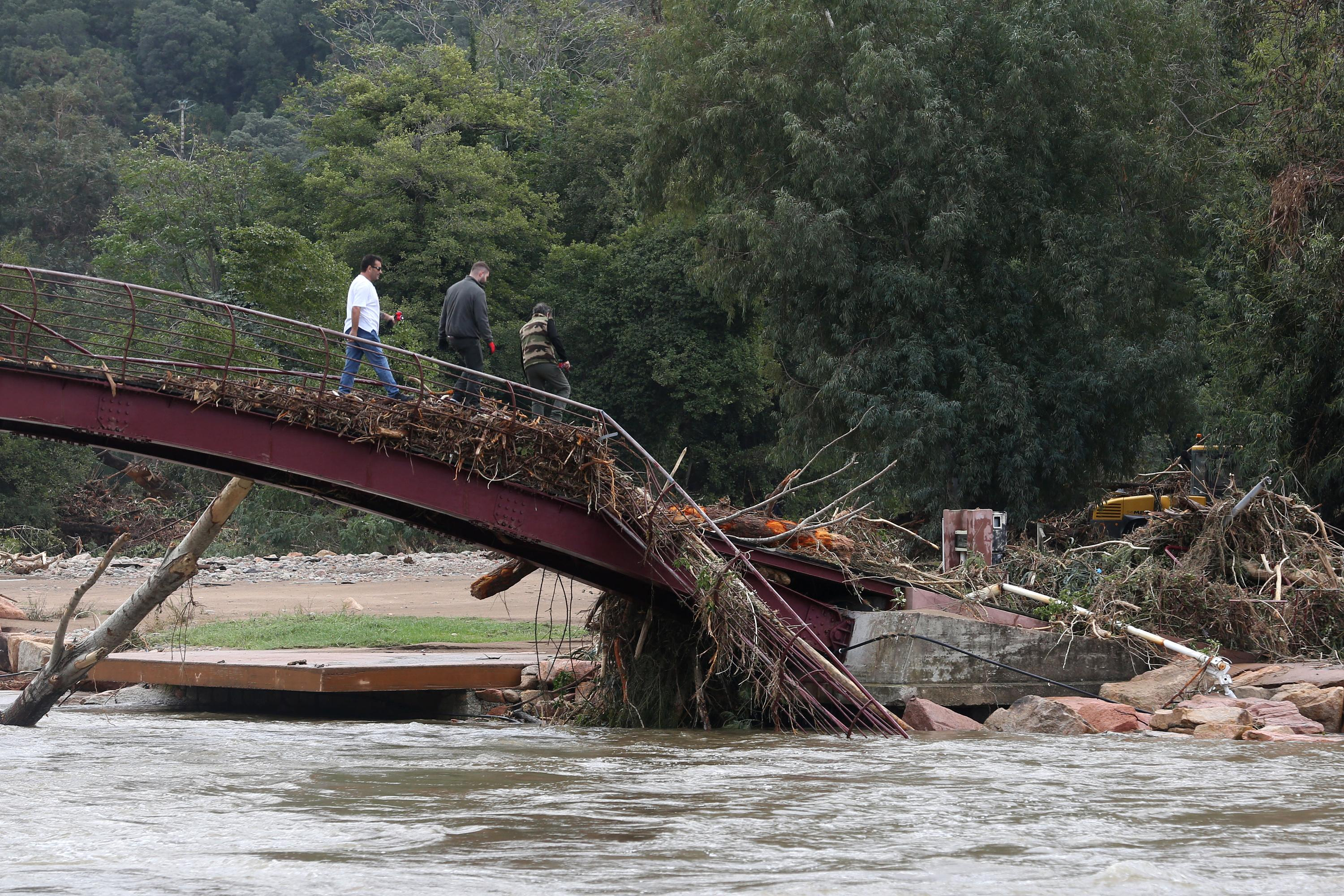In 2023, climate disasters in France will cost 6.5 billion euros to insurers who are worried about the “change in scale” and the acceleration of these devastating events, Florence Lustman told AFP on Wednesday. President of France Assureurs. Concerning climate risk, we are experiencing a clear “change of scale”, with 2023 being “the third most serious year in terms of climate disasters after 1999 and 2022”, the president of the federation told AFP.
The year 1999, marked by storms Lothar and Martin, remains the worst so far with an estimated cost of 13.8 billion euros in constant euros, followed by 2022 whose climatic events cost 10 billion euros to insurers. We are crossing “successive levels in the cost of climate risk”. In the years 2000 to 2008 “we were on average at 2.7 billion euros per year”. Then between 2010 and 2019 “we increased to 3.7 billion. And if I take the average over the last four years, including 2022 and 2023, I am at six billion,” she added.
There were many extreme phenomena in 2023, which is also the second hottest year in France after 2022, including “15 windy phenomena, with winds of more than 150 km/h”, “14 floods with at each time, more than 15 municipalities which were the subject of a natural disaster order", the storms Ciaran and Domingos which affected the north-west and caused 517,000 losses at a cost of 1.6 billion euros , and the floods in the North which left “40,000 victims”.
Storms, such as hail, are covered in insurers' damage contracts, while floods or droughts are subject to the “cat nat” regime. The State covers half of the costs, thereby reducing insurers' bills by half. “This public-private partnership aims to cover risks which would otherwise become uninsurable for insurers,” explains Florence Lustman. Former insurer Thierry Langreney was commissioned by the government to carry out a study on the insurability of climate risks, the publication of which is impatiently awaited by the insurance world.
A very important measure was already taken at the end of last year by Bercy to anticipate the increase in devastating climatic events with the increase in the “Cat Nat” surcharge from 12% to 20% from 2025 for all policyholders. But faced with this intensification of risks “we consider that we still have the means to act through prevention”, according to the president of France Assureurs.
Thus, “almost all insurers send SMS messages as soon as you have a property that is insured in a location that is likely to experience an episode of natural events.” “Civil and government prevention, combined with insurer prevention, mean that the Ciaran and Domingos storms, for example, had an impact that was controlled. It could have been much worse,” underlines Florence Lustman.
The response of insurers to this change in scale of risks, “it is a change of scale in our prevention behaviors”, adds the president of France Assureurs who launched a very concrete “drought initiative” to find the best way to prevent or repair the shrinkage-swelling of clays which threatens more than 11 million houses in France with cracks. The shrinkage-swelling of clay soils (RGA), alternation of drought and rehydration of soils which causes buildings to crack, is eligible for the natural disaster regime.

 B:SM will break its investment record this year with 62 million euros
B:SM will break its investment record this year with 62 million euros War in Ukraine: when kyiv attacks Russia with inflatable balloons loaded with explosives
War in Ukraine: when kyiv attacks Russia with inflatable balloons loaded with explosives United States: divided on the question of presidential immunity, the Supreme Court offers respite to Trump
United States: divided on the question of presidential immunity, the Supreme Court offers respite to Trump Maurizio Molinari: “the Scurati affair, a European injury”
Maurizio Molinari: “the Scurati affair, a European injury” First three cases of “native” cholera confirmed in Mayotte
First three cases of “native” cholera confirmed in Mayotte Meningitis: compulsory vaccination for babies will be extended in 2025
Meningitis: compulsory vaccination for babies will be extended in 2025 Spain is the country in the European Union with the most overqualified workers for their jobs
Spain is the country in the European Union with the most overqualified workers for their jobs Parvovirus alert, the “fifth disease” of children which has already caused the death of five babies in 2024
Parvovirus alert, the “fifth disease” of children which has already caused the death of five babies in 2024 The A13 motorway will not reopen on May 1
The A13 motorway will not reopen on May 1 More than 1,500 items for less than 1 euro: the Dutch discounter Action opens a third store in Paris
More than 1,500 items for less than 1 euro: the Dutch discounter Action opens a third store in Paris 100 million euros in loans, water storage, Ecophyto plan… New measures from the executive towards farmers
100 million euros in loans, water storage, Ecophyto plan… New measures from the executive towards farmers “He is greatly responsible”: Philippe Martinez accuses Emmanuel Macron of having raised the RN
“He is greatly responsible”: Philippe Martinez accuses Emmanuel Macron of having raised the RN Les Galons de la BD dedicates War Photographers, a virtuoso album on the Spanish War
Les Galons de la BD dedicates War Photographers, a virtuoso album on the Spanish War Theater: Kevin, or the example of an academic failure
Theater: Kevin, or the example of an academic failure The eye of the INA: Jean Carmet, the thirst for life of a great actor
The eye of the INA: Jean Carmet, the thirst for life of a great actor The Nuc plus ultra: St Vincent the Texane and Neil Young the return
The Nuc plus ultra: St Vincent the Texane and Neil Young the return Skoda Kodiaq 2024: a 'beast' plug-in hybrid SUV
Skoda Kodiaq 2024: a 'beast' plug-in hybrid SUV Tesla launches a new Model Y with 600 km of autonomy at a "more accessible price"
Tesla launches a new Model Y with 600 km of autonomy at a "more accessible price" The 10 best-selling cars in March 2024 in Spain: sales fall due to Easter
The 10 best-selling cars in March 2024 in Spain: sales fall due to Easter A private jet company buys more than 100 flying cars
A private jet company buys more than 100 flying cars This is how housing prices have changed in Spain in the last decade
This is how housing prices have changed in Spain in the last decade The home mortgage firm drops 10% in January and interest soars to 3.46%
The home mortgage firm drops 10% in January and interest soars to 3.46% The jewel of the Rocío de Nagüeles urbanization: a dream villa in Marbella
The jewel of the Rocío de Nagüeles urbanization: a dream villa in Marbella Rental prices grow by 7.3% in February: where does it go up and where does it go down?
Rental prices grow by 7.3% in February: where does it go up and where does it go down? Even on a mission for NATO, the Charles-de-Gaulle remains under French control, Lecornu responds to Mélenchon
Even on a mission for NATO, the Charles-de-Gaulle remains under French control, Lecornu responds to Mélenchon “Deadly Europe”, “economic decline”, immigration… What to remember from Emmanuel Macron’s speech at the Sorbonne
“Deadly Europe”, “economic decline”, immigration… What to remember from Emmanuel Macron’s speech at the Sorbonne Sale of Biogaran: The Republicans write to Emmanuel Macron
Sale of Biogaran: The Republicans write to Emmanuel Macron Europeans: “All those who claim that we don’t need Europe are liars”, criticizes Bayrou
Europeans: “All those who claim that we don’t need Europe are liars”, criticizes Bayrou These French cities that will boycott the World Cup in Qatar
These French cities that will boycott the World Cup in Qatar Paris 2024 Olympic Games: “It’s up to us to continue to honor what the Games are,” announces Estanguet
Paris 2024 Olympic Games: “It’s up to us to continue to honor what the Games are,” announces Estanguet MotoGP: Marc Marquez takes pole position in Spain
MotoGP: Marc Marquez takes pole position in Spain Ligue 1: Brest wants to play the European Cup at the Stade Francis-Le Blé
Ligue 1: Brest wants to play the European Cup at the Stade Francis-Le Blé Tennis: Tsitsipas released as soon as he entered the competition in Madrid
Tennis: Tsitsipas released as soon as he entered the competition in Madrid


















